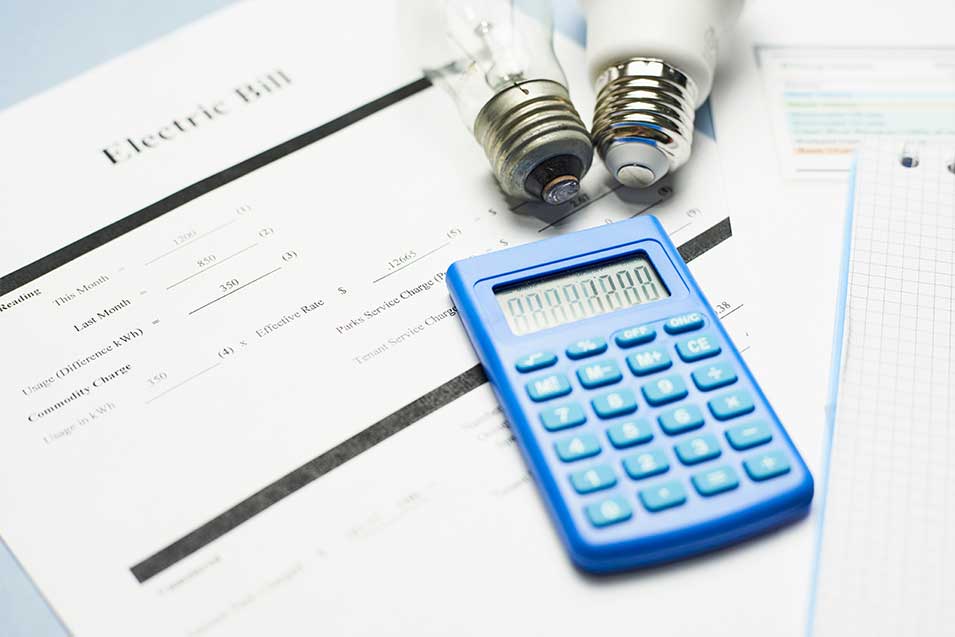How to Control Your Electricity Bill: Tips for Reducing Energy Costs
08th November 2024 | Written By: Utsavi Tank | Read Time: 3min | Last Updated: 08th November 2024 Are you tired of getting sticker shock every time your electricity bill arrives? You’re not alone. Many households find themselves grappling with high energy costs, which can strain budgets and raise concerns about environmental impact. But fear not! Taking control of your electricity expenses is easier than you might think. With some savvy tweaks and smart upgrades to your home, you can dramatically slash those bills while contributing to a greener planet. Here’s how to zap those high costs and energize your savings with practical, effective tips for reducing your monthly electricity bill. Start with an energy audit to identify where your home is using the most electricity. Many utility companies offer free audits, or you can conduct a simple audit yourself by examining your major appliances and lighting for energy efficiency. This step will help you pinpoint areas where improvements can be made.
If your home appliances are outdated, they might be consuming more energy than necessary. Look for products with the ENERGY STAR label when replacing them. ENERGY STAR appliances meet strict energy efficiency guidelines set by the Bureau of Energy Efficiency (BEE) rates and Department of Energy. While the upfront cost might be higher, the long-term savings on your electricity bills can be significant.
Heating and cooling can account for nearly half of your home’s total energy consumption. Using a smart thermostat can help reduce these costs significantly. These devices automatically adjust your home’s temperature settings for optimal performance, ensuring energy is not wasted. You can control them remotely via your smartphone, making it easy to adjust settings when you’re away from home.
LED bulbs are far more energy-efficient than traditional incandescent bulbs and last significantly longer. Although LED bulbs might have a higher initial cost, their long lifespan and low energy consumption make them a cost-effective investment in the long run. Additionally, consider utilizing natural light as much as possible during the day to save on lighting costs.
If you’re in a location with adequate sunlight, solar panels can significantly reduce your electricity bill. Solar panels convert sunlight into electricity, offsetting your energy use and providing substantial savings over time. Many states offer incentives and rebates to help offset installation costs.
Many devices continue to draw power even when turned off, known as “phantom loads.†Unplug appliances when not in use or use a power strip to turn off multiple devices at once. This simple habit can lead to noticeable savings on your electric bill.
Water heating can account for a significant portion of your electricity use. Lower the thermostat on your water heater to 120 degrees Fahrenheit. This is typically sufficient for most uses and can reduce your heating costs.
Involve your entire household in energy conservation efforts. Teach everyone to be more conscious of leaving lights on or running appliances unnecessarily. Promoting energy-saving habits can help cultivate a culture of conservation at home. How to calculate electricity bill RCCB full form Best wire for home A nightstand, alternatively night table, Bedside Table, daystand or bedside cabinet, is a small table or cabinet designed to stand beside a bed or elsewhere in a bedroom. Modern nightstands are usually small bedside tables, often with one or sometimes more drawers and/or shelves and less commonly with a small door. They are often used to support items that might be useful during the night, such as a table lamp, alarm clock, reading matter, cell phone, eyeglasses, tissues, sex toys, a drink, or medication. Nightstand Table,Solid Wood Nightstand,Nightstand With Drawers,Bedside Table With Drawer Jinan Tri-Tiger Technology Development Co., Ltd , https://www.jinanfurniture.com
How to Control Your Electricity Bill: Tips for Reducing Energy Costs
Audit Your Energy Use:
Upgrade to Energy-Efficient Appliances:
Utilize Smart Thermostats:
Switch to LED Lighting:
Install Solar Panels:
Unplug Unused Electronics:
Adjust Your Water Heating Settings:
Educate Your Family:
By implementing these strategies, not only will you see a decrease in your electricity bills, but you’ll also contribute to a more sustainable future. Start with small changes and gradually incorporate more strategies to increase your energy efficiency and maximize your savings.

Frequently Asked Questions (FAQs) :
Q1. Do energy-efficient appliances really make a difference in my electric bill?
Yes, energy-efficient appliances can significantly reduce your electric bill. They are designed to use less energy to perform the same tasks. Look for appliances with Energy Star labels, which indicate they meet certain energy efficiency standards. Over time, the savings from these appliances can add up to a substantial amount.
Q2. How can I check if my home is using too much electricity?
There are a few ways to monitor your home’s electricity usage:
Q3. How often should I replace my light bulbs to save on energy?
The lifespan of light bulbs varies depending on the type. However, LED bulbs generally last much longer than traditional incandescent or fluorescent bulbs. If your light bulbs are burning out frequently, it may be time to replace them with more energy-efficient options.
Q4. What should I do if my electric bill is unexpectedly high?
If your electric bill is higher than usual, there are several steps you can take:
Q5. How can I save electricity at home without sacrificing comfort?
There are many ways to reduce your energy consumption without compromising your comfort:
Related Blogs



Before indoor flush toilets became commonplace, the main function of a nightstand was to contain a chamber pot. As a result, early nightstands were often small cabinets, sometimes fitted with a drawer, and usually containing an enclosed storage space below covered by one or more doors. Another term sometimes given to such cabinets was commode.
French, Italian and Spanish antique nightstands usually have one drawer and an enclosed storage space with one door. They can be embellished with gold leaf finish, bronze or parquetry inlaid.
Wood and pressboard are the most common materials used for nightstands.